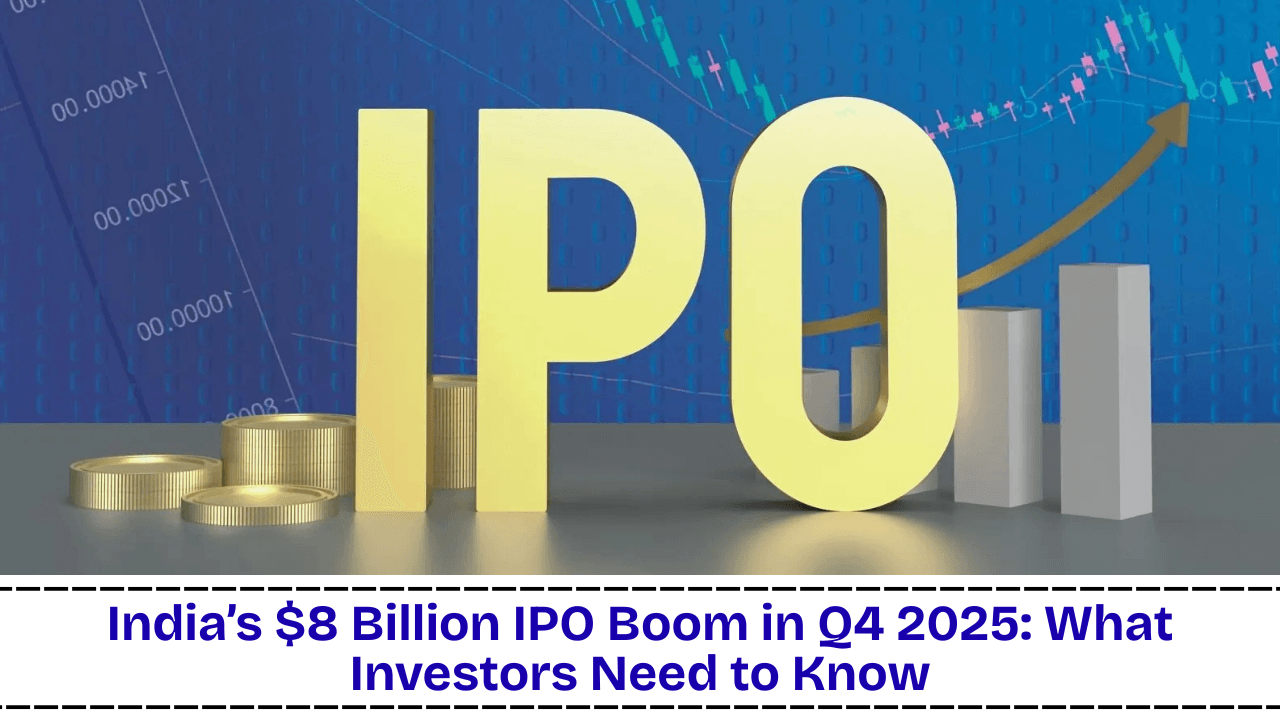India’s $8 Billion IPO Boom in Q4 2025: What Investors Need to Know
October 2025 could go down as a milestone month for India’s stock markets. After witnessing a quiet first nine months of the year, the country is now preparing for a massive $8 billion IPO rush in Q4. Big names from finance, consumer electronics, and coworking are lining up to tap public markets.
But what’s fueling this sudden spike in activity? Which companies are leading the IPO frenzy? And most importantly—how should investors position themselves to make the most of this golden window?
In this, we’ll break down:
The economic and policy backdrop behind the IPO surge
Key players and industries to watch
Challenges that could impact success
What this wave means for investors and startups alike
- The Macro Backdrop: Why Now?
1.1 Investor Sentiment & Liquidity
Indian equity markets in 2025 have shown steady but moderate growth. With global inflation stabilizing and central banks shifting to less aggressive policies, investor appetite has strengthened. Both domestic and foreign funds are once again willing to bet big on high-potential Indian companies.
1.2 Debt Markets & Cost of Capital
Bond yields have remained elevated this year, making debt financing expensive. As a result, raising equity capital through IPOs is now more attractive for companies looking to scale quickly.
1.3 Policy & Regulatory Support
The government and SEBI have continued to push reforms that make listings smoother and more transparent. Retail participation is also increasing, giving issuers more confidence that demand will be strong.
- Spotlight IPOs: Tata Capital, LG India, WeWork
Several high-profile IPOs are set to dominate headlines this quarter:
Tata Capital IPO 2025 – aiming to raise around $1.5 billion, one of the biggest listings of the year.
LG Electronics India IPO – targeting close to $1.3 billion, highlighting confidence in India’s consumer market.
WeWork India listing – bringing the co-working space sector into focus with a unique growth story.
These aren’t just fundraising exercises—they’re strategic moves signaling optimism about India’s long-term growth trajectory.

- Which Sectors Are Riding the Wave?
While traditional sectors dominate, some new-age industries are also joining the IPO rush:
Finance & NBFCs – fueled by credit growth and retail lending demand.
Consumer Electronics – benefiting from India’s fast-rising middle class.
Fintech & Digital Platforms – still hotbeds of innovation and investor interest.
Deep Tech & AI Startups – tapping into the global push for artificial intelligence.
Clean Energy & Sustainability – green IPOs are expected to gain traction with ESG-focused investors.
- Risks, Challenges & Red Flags
The hype is real-but so are the risks. Investors should be aware of:
Overvaluation traps – inflated pricing could lead to disappointing post-listing performance.
Regulatory compliance – SEBI’s tighter rules may increase costs for issuers.
Global shocks – interest rate hikes, geopolitical issues, or oil price volatility could affect capital flows.
Execution gaps – strong IPOs often stumble if business fundamentals don’t keep pace with growth promises.
- What It Means for Investors & Startups
For Investors
Fresh opportunities to enter high-growth firms early.
Diversification across industries previously dominated by private equity.
Caution is critical—thorough research on leadership, profitability, and market fit is non-negotiable.
For Startups & Growth Companies
Public listing as a scale engine—access to fresh funds and wider investor trust.
Increased accountability—greater transparency improves governance.
Brand and hiring edge—being listed boosts credibility and attracts talent.
- The Bigger Picture: India’s Capital Market Evolution
If India’s Q4 IPO wave delivers, it could mark a turning point for domestic capital markets:
More Indian wealth staying within India instead of chasing global markets.
Enhanced liquidity and participation in secondary markets.
Better alignment of valuations between private and public sectors.
Stronger foundation for funding India’s next generation of startups.
On the flip side, failure to sustain momentum or poor post-listing performance could dampen sentiment and push investors to look elsewhere.
Conclusion
October 2025 could be remembered as the season when India’s IPO engine roared back to life. With major players like Tata Capital, LG Electronics India, and WeWork India entering the market, investors are being presented with rare opportunities.
For those willing to take calculated risks, this IPO wave could unlock new wealth-creation avenues. For companies, it’s a chance to prove their resilience on a global stage. But caution remains key—because in the world of IPOs, hype can fade quickly, while fundamentals always last.





Post Comment